15 Upcoming Azure Cloud Services For Developers, Security, AI
Azure Video Analyzer, Azure Cognitive Search Speaker Recognition and Azure Object Anchors are just some of the coolest tools listed in limited access for users of the cloud service, according to Microsoft.

A tool for video analytics, a speaker recognition service and a way to anchor objects for mixed reality are among the Microsoft Azure products in preview or planned for general availability soon for regions in the United States.
Azure Video Analyzer, Azure Cognitive Search Speaker Recognition and Azure Object Anchors are just some of the coolest tools listed in limited access for users of the cloud service, according to Microsoft.
[RELATED: AWS Vs. Azure Vs. Google Cloud: 5 Cloud Spending Trends]
Redmond, Wash.-based Microsoft is gaining ground on Amazon Web Services, widely regarded as Microsoft’s chief rival in cloud computing, according to Flexera’s 2022 State of the Cloud report.
AWS, Microsoft and No. 3 cloud services vendor Google each spend billions annually on building and equipping new data centers to meet the skyrocketing demand for their cloud services. IT research firm Gartner predicts that public cloud services revenue will increase 22 percent globally in 2022 year over year, due to broad acceleration of cloud adoption.
About 18 percent of enterprises spend $12 million or more annually on AWS. By comparison, 15 percent spend $12 million or more annually on Azure. Approximately 7 percent of enterprises reported spending $12 million or more annually on Google Cloud Platform, according to Flexera.
During Microsoft’s latest quarterly earnings, the company reported that the intelligent cloud segment of its business reached $18.3 billion for the quarter, up 26 percent year over year. Server products and cloud services revenue increased 29 percent. Azure and other cloud services revenue grew 46 percent.
Giving some highlights in the Azure suite, CEO Satya Nadella said that hybrid cloud tool Azure Arc saw its customer base triple year over year. And Azure Cognitive Services saw more than 30 million hours of speech transcribed last quarter, about doubled the amount year over year.
The following are upcoming Azure releases planned for U.S. regions and non-regional deployment.
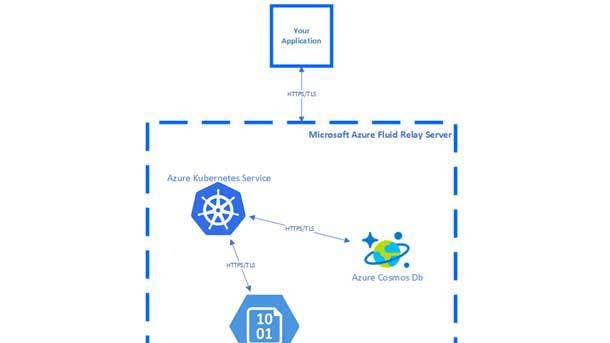
Azure Fluid Relay
Now in preview, the Azure Fluid Relay tool is expected to enter general availability in the third quarter for the East U.S. and East U.S. 2 (Virginia), South Central U.S. (Texas), West U.S. 2 (Washington state) and West U.S. 3 (Arizona) regions, according to Microsoft.
Azure Fluid Relay allows users to build, manage and scale collaboration applications without a Fluid server, speeding up time and resources needed for deployment. Fluid Relay follows Microsoft’s open-source, low-latency-focused Fluid Framework. It allows for coauthoring and data synchronization in apps, according to Microsoft.
Users can build secure, low-latency experiences with cloud-native Azure storage and hosting capabilities. A formal service-level agreement will come with general availability, according to Microsoft.
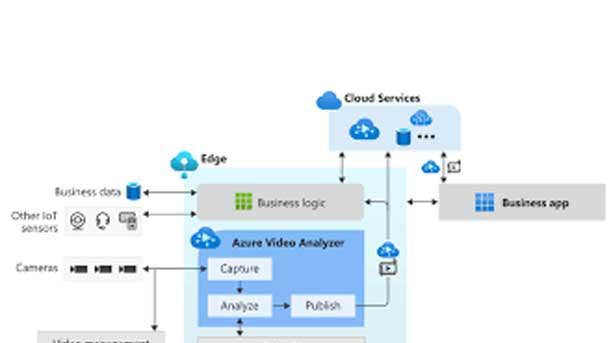
Azure Video Analyzer
The Azure Video Analyzer tool will become generally available during the second quarter for the West U.S. 3 (Arizona) region, according to Microsoft. The tool is in preview in West U.S. 2 (Washington state) and East U.S. 2 (Virginia).
The analyzer is an artificial intelligence-powered way to build video analytics services quickly in the cloud and at the edge, according to Microsoft.
Developers can extract analysis from stored and streaming videos to enhance workplace safety, in-store experiences, digital asset management, media archives and other use cases. Users can take the data from the analyzer for spatial analysis, timeline-based visualizations, heatmaps, anomaly detection and other uses without video or machine learning expertise.
Azure Video Analyzer – previously known as Live Video Analytics – cuts the service development time to days from months, according to Microsoft.
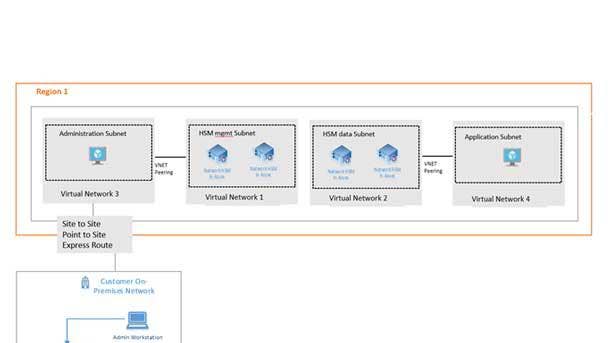
Azure Payment HSM
This service for securing digital payments in the cloud with a hardware security module (HSM) is expected to become generally available in the second quarter of the year for the East U.S. (Virginia) and South Central U.S. (Texas) regions, according to Microsoft.
Azure Payment HSM is bare metal infrastructure-as-a-service for real-time payment transactions in Azure. The service is aimed at financial institutions and payment networks, service providers, acquirers, processors and other members of the payment ecosystem.
The service is used for payment processing, credential issuing, securing keys, authentication data, data protection and other activities, according to Microsoft.
It provides cryptographic key operations and meets the highest payment card industry requirements for security, compliance, low latency and performance, according to Microsoft. The service is delivered with Thales payShield 10k payment HSMs.
The Azure Payment HSM service promises to simplify security audit compliance and increase security, according to Mcirosoft. Users can maintain full administrative control in the cloud with single-tenant, self-managed HSMs. Microsoft doesn’t access data once the HSM is allocated to a subscription. Data is erased once the HSM returns to Microsoft.
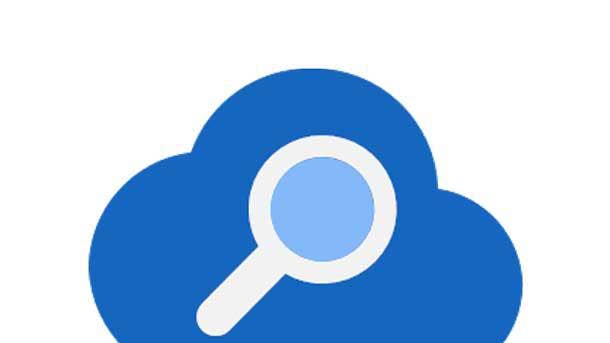
Azure Cognitive Search Speaker Recognition And Semantic Search
Microsoft is granting limited access to a speaker recognition service available as part of Azure Cognitive Services.
The service verifies and identifies speakers using voice biometry. The service is aimed at call centers, voice-based patient check-in, meeting transcription, multi-user device personalization and other user cases, according to Microsoft.
The limited access is done “with the intention of protecting the rights of individuals and society, fostering transparent human-computer interaction and counteracting the proliferation of harmful deepfakes and misleading content,” according to Microsoft. Interested customers must fill an intake form and submit to a vetting process to get access to the service.
In addition to speaker recognition, another Azure Cognitive Search feature – semantic search – is in an ungated public preview for the East US, East US 2, North Central US, South Central US, West US and West US 2 regions. Semantic search aims to rank the most relevant search results for users with the help of deep learning modules.
Users can use semantic search to understand customer intent and improve customer customer engagement, according to Microsoft. They can apply semantic configurations to indicate description, title and keyword fields in index definitions.
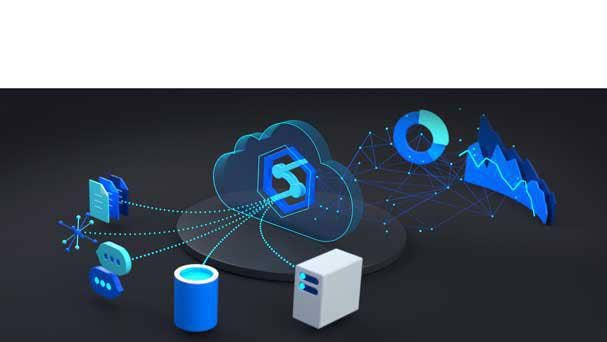
Azure Synapse Analytics Data Explorer
Available in preview in most U.S. regions, the Azure Synapse Data Explorer tool allows users to query log and telemetry data with indexing technology for free-text and semi-structured data.
Synapse Data Explorer promises built-in integrations for no-code, low-code, high-throughput data analysis, ingesting data from Event Hub, Kafka, Azure Data Lake, Fluentd, Fluent Bit and other cloud and on-premises sources, according to Microsoft. The tool uses the Kusto Query Language.
Microsoft expects the tool to get used for artificial intelligence operations (AIOps), including pattern recognition, anomaly detection, forecasting and other actions. Users can also use the tool to replace costly infrastructure-based log search services, build internet of things services and build new software services.
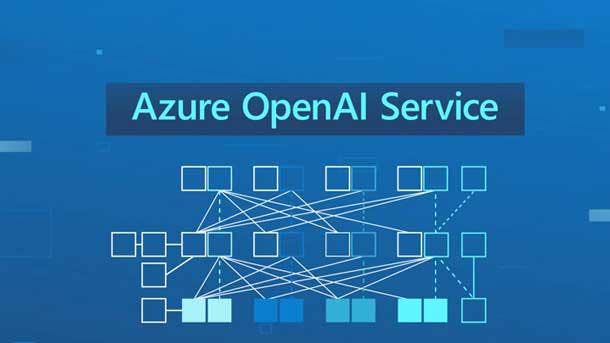
Azure OpenAI Service
Azure OpenAI Service is available by invitation only at the moment, according to Microsoft.
The service allows users to fine-tune language models for summarizing, code generation and other uses. The service has built-in responsible artificial intelligence controls for detecting and mitigating harmful use.
Users gain access to Generative Pre-trained Transformer 3 (GPT-3) models pre-trained with trillions of words, according to Microsoft. Users can use an application programming interface (API) to customize models.
In November, Microsoft CEO Satya Nadella hailed the Azure OpenAI Service as bringing “together the power of GPT-3 with the enterprise capabilities of Azure.”
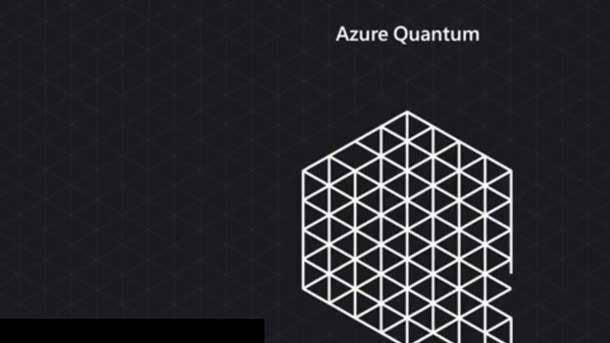
Azure Quantum
Listed as in preview for the East U.S. (Virginia), West Central U.S. (Wyoming), West U.S. (California) and West U.S. 2 (Washington state) regions, Azure Quantum aims to bring quantum hardware to the cloud.
Users can use Cirq, Qiskit, Q# and other software development kits (SDKs) to develop applications for quantum hardware on the market today and for the future, according to Microsoft.
Quantum computing, which marries quantum physics and computing, can imrpove actions in energy and utilities, financial services, transportation and logistics and other areas, according to Microsoft. The tech giant also offers an enterprise acceleration program for jointly developing quantum services.
Not only is Microsoft investing in quantum, but so are its cloud rivals IBM and Google. As the use of quantum computing grows, so will the need for securing legacy technology, an expert in digital certificates for encryption recently told partners at an XChange+ conference hosted by CRN parent The Channel Company.
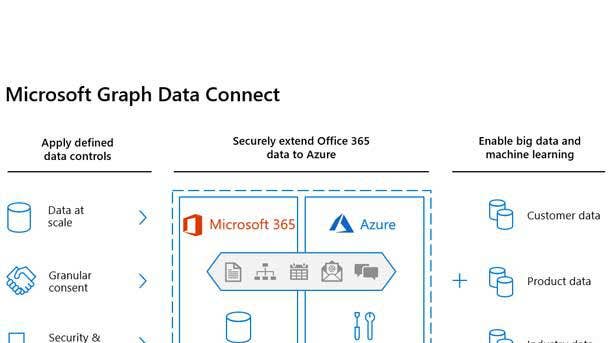
Microsoft Graph Data Connect
Microsoft Graph Data Connect, available in preview, is a connector meant for copying select Microsoft 365 productivity datasets into an Azure data store tenant. Users can turn to Graph Data Connect for machine learning training and artificial intelligence models, according to Microsoft.
Users have granular consent to make sure applications only access essential data, Microsoft Graph data can be set up with a repeatable schedule.
So far, Teams one-to-one and meeting chat messages and Outlook messages, mail folders and events are among the select datasets that are available through Graph Data Connect, according to Microsoft. So far, users have applied Graph Data Connect to sales productivity, data archiving, data management, workflows, compliance and other use cases.
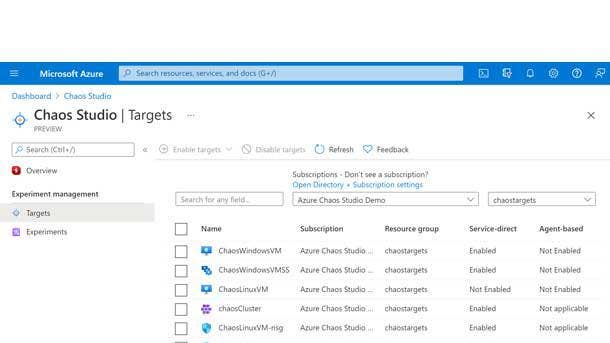
Azure Chaos Studio
Azure Chaos Studio is available in preview for U.S. regions including Central U.S. (Iowa), East U.S. (Virginia) and West U.S. (California), according to Microsoft.
The service is meant to improve application resilience with disruptive actions (also called “faults”) and simulated outages, according to Microsoft. Using Chaos Studio should accelerate problem discovery from late-stage development through production.
In March, the service gained new faults, including one that blocks all network access to an Azure Key Vault by temporarily modifying network rules to prevent an application dependent on the Key Vault from accessing secrets, keys or certificates.
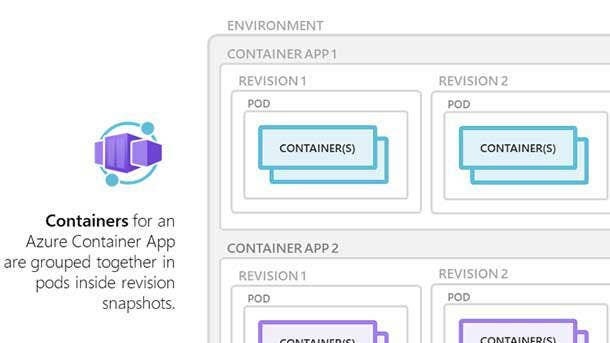
Azure Container Apps
Available in preview, Azure Container Apps offers users a way to build and deploy applications and microservices with serverless containers minus any complex infrastructure.
Users can write code in their preferred language or framework, according to Microsoft. The tool allows for dynamic scaling based on HTTP traffic or Kubernetes Event-Driven Autoscaling (KEDA). Users don’t pay for the first 180,000 vCPU seconds; 360,000 GiB-seconds and 2 million requests each month.
Common uses of Azure Container Apps include deploying API endpoints and hosting background processing applications, according to Microsoft.
In February, Microsoft added creation of Container Apps environments in new or existing virtual networks for access to private IP addresses, outbound internet connectivity maintenance and private communication.
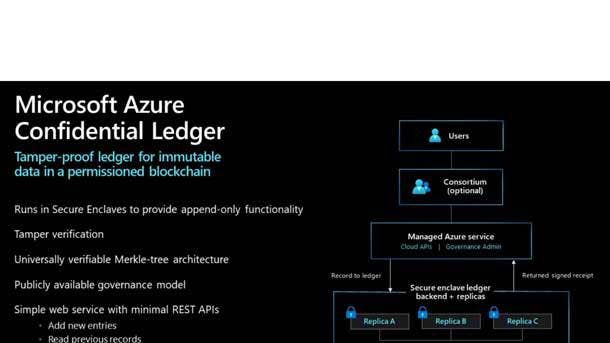
Azure Confidential Ledger
This blockchain-backed, managed, decentralized ledger for data entries is available in preview.
The Confidential Ledger promises a tamper-proof, unstructured data store backed by cryptographically verifiable evidence, according to Microsoft. Users can prevent unauthorized or accidental modification to data at rest, in transit or in use.
Users can store business transaction records, application and contract updates, access permissions control changes and security alerts, for example, according to Microsoft. Limitations to Confidential Ledger during preview include inability to change the ledger type once created, no support for standard Azure Disaster Recovery, no recovery after deletion and a requirement
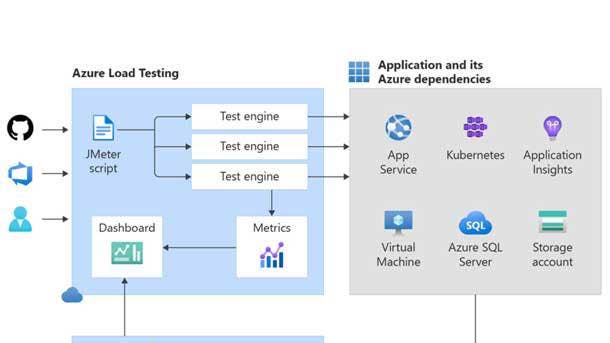
Azure Load Testing
Azure Load Testing is a managed service available in preview for the East U.S. and East U.S. 2 (Virginia) and South Central U.S. (Texas) regions, according to Microsoft.
The service is meant to simplify the generation of high-scale load and identify bottlenecks in application performance, according to Microsoft. It supports up to 11,250 concurrent virtual users in a load test. Each test can run up to three hours.
Developers and testers can use Load Testing to run simulations and analyze scalability, capacity and other measures, according to Microsoft. The tool supports continuous integration and delivery (CICD) workflows. Test engines run Apache JMeter script.
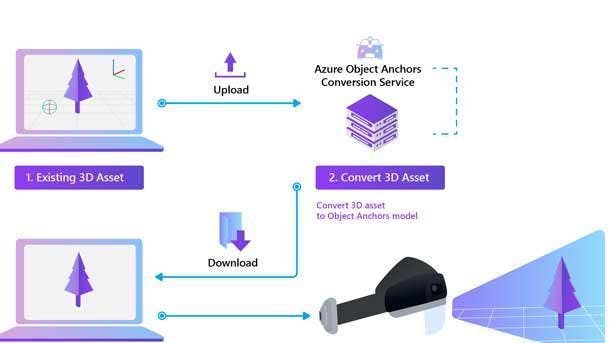
Azure Object Anchors
This tool for aligning and anchoring 3D content to objects in the physical world entered public preview in March for the East U.S. 2 (Virginia) region.
Azure Object Anchors, a tool in Microsoft’s mixed reality stack, aims to reduce labor needs and errors by eliminating place markets such as quick response (QR) codes and manual alignment of holograms to objects, according to Microsoft. Object Anchors comes with a service for model conversion and a runtime client software development kit (SDK) for HoloLens.
Uses for Object Anchors include mixed reality training experiences for workers, guiding employees through tasks such as how to use a piece of machinery and tracking where objects are in a physical environment.
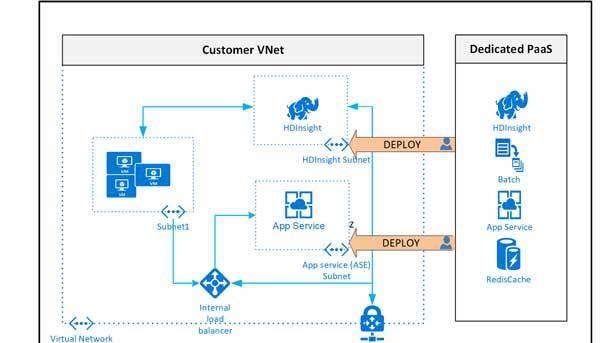
Azure Virtual Network Manager
Azure Virtual Network Manager, a central management service for virtual networks, is available in preview for regions including West (California), West 2 (Washington state) and the East and East 2 (Virginia) regions.
The goal of this tool is to reduce operational costs from virtual networks, according to Microsoft. Users can create and manage complex network topologies and security rules across subscriptions.
Users no longer need to manage a mesh network for transitive communication between spokes, according to Microsoft. Security managers can create network groups for production and test environments, development teams, finance departments and other functions for better
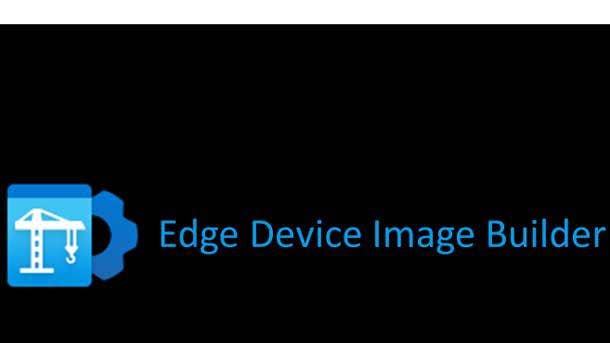
Edge Device Image Builder
In March, Microsoft launched a preview of Edge Device Image Builder (EDIB) to help original equipment manufacturers build secure, Azure-connected devices.
The tool is meant to simplify image building for the Windows 10 IoT Enterprise operating system, according to Microsoft.
EDIB assists with recommended attack surface reduction rules, application control, encryption at rest and other security configurations. Users gain pre-installed and configured Azure service endpoints including Azure IoT Edge for Linux on Windows, according to Microsoft.